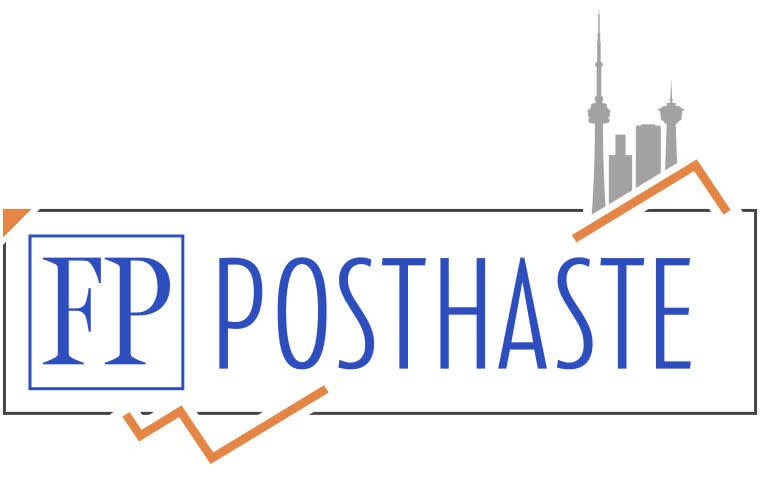Posthaste: Toronto lags the world in returning to the office — and real estate feels the pain


Workers around the world have been trickling back to the office since the pandemic, but in Canada that trickle appears to be slower than most.
According to a report by Centre for Cities, Toronto lags other major global centres in returning to the office. With just 2.7 days on site on average, Canada’s biggest city ranks with London at the bottom of the scale.
That number would increase if employer mandates were more strictly enforced, but the report notes that more than half of Toronto bosses are worried about staff quitting from tightening office-working mandates.
While hybrid work has its merits, there are concerns that it puts regions at a productivity disadvantage, says Centre for Cities. In knowledge-intensive industries there is a known benefit in “agglomeration,” the transfer of information and skills in densely populated city centres.
“This could be desk-based discussions, catch-ups in local cafes, even serendipitous encounters on the street – all these boost worker skills and firm productivity,” said the report. “And don’t just take economists’ word on this; both surveyed employers and employees recognized the learning benefits of attending their city-centre offices.”
Another drawback of remote work is the impact on office real estate, which has been reeling globally since pandemic shutdowns.
A report from CIBC Capital Markets highlights a possible connection between the number of days workers are spending in the office and vacancy rates.
Singapore and Paris with the highest office attendance also have the lowest vacancy rates at 5 per cent and 8 per cent. At the other end, Sydney, London and Toronto have the lowest number of average days in the office and the highest vacancy rates of 12 per cent, 8 per cent and 19 per cent, respectively, said the CIBC analysis.
New York stands out as the exception with one of the highest office attendances globally but also one of the highest vacancy rates at 19 per cent.
Nationally, Canada’s office vacancy rate edged up to 18.6 per cent in the third quarter of this year, with downtown vacancy at 19.7 per cent, says CIBC.
And Toronto’s vacancy rate isn’t the highest.
This distinction goes to London, Ont., where downtown office vacancy is at a whopping 31.4 per cent, according to data from CBRE Research. Downtown Calgary isn’t far behind at 29.6 per cent.
While the occupancy decline has levelled off, office real estate in Canada’s major cities may get worse before it gets better as existing construction projects reach completion this year.
CIBC analysts estimate that it will take close to seven years for the office vacancy rate to recover to 10 per cent nationally.
Sign up here to get Posthaste delivered straight to your inbox.

America’s job market came roaring back in September with such “shocking strength and resilience” (the words of one economist) that the impact was felt all the way to Ottawa, home of the Bank of Canada.
U.S. employers added 254,000 jobs in the month and the jobless rate dropped from 4.2 per cent to 4.1 per cent — an unexpectedly strong report that pretty much took a 50-basis-point cut by the Federal Reserve in October off the table.
Bond yields took a big step up on the data on both sides of the border and markets are now favouring smaller 25-bps cuts to come from Canada’s central bank.
“The reality is that a hale and hearty U.S. economy this deep into the cycle is good news for the Canadian outlook, and implies less urgency for the Bank [of Canada],” said Douglas Porter, chief economist at BMO Capital Markets.
Principles for Responsible Investment holds its annual PRI In Person annual conference in Toronto this week
Today’s Data: United States consumer credit

U.S. jobs bonanza slams the brakes on falling mortgage rates in Canada
Boomers are giving kids money before they die in ‘dysfunctional’ system
What are the pros and cons of buying an overseas investment property?
The significant increase in the value of Canadian real estate has some investors looking elsewhere. Certified financial planner Andrew Dobson says many properties here are cash-flow negative or require a high down payment to be cash-flow neutral or positive, but possibly more stringent regulations abroad and your unfamiliarity are things to think about. Find out more
Build your wealth
Are you a Canadian millennial (or younger) with a long-term wealth building goal? Do you need help getting there? Drop us a line with your contact info and your goal and you could be featured anonymously in a new column on what it takes to build wealth.
McLister on mortgages
Want to learn more about mortgages? Mortgage strategist Robert McLister’s Financial Post column can help navigate the complex sector, from the latest trends to financing opportunities you won’t want to miss. Plus check his mortgage rate page for Canada’s lowest national mortgage rates, updated daily.
Today’s Posthaste was written by Pamela Heaven, with additional reporting from Financial Post staff, The Canadian Press and Bloomberg.
Have a story idea, pitch, embargoed report, or a suggestion for this newsletter? Email us at posthaste@postmedia.com.
Bookmark our website and support our journalism: Don’t miss the business news you need to know — add financialpost.com to your bookmarks and sign up for our newsletters here.

 Yahoo Finance
Yahoo Finance 




